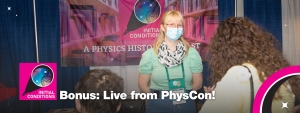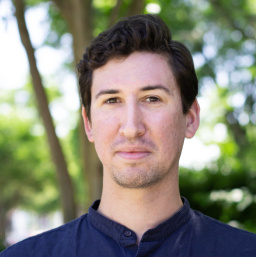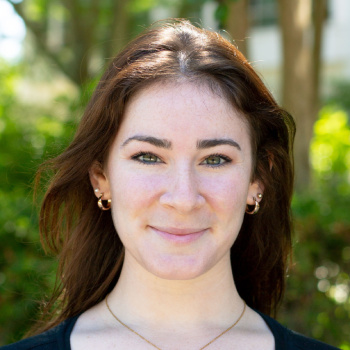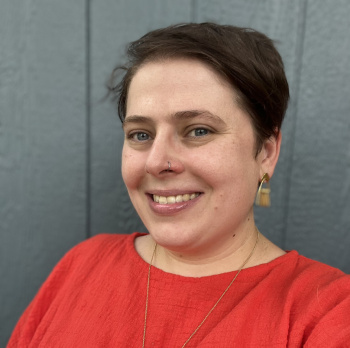
In June, after several technical mishaps, I flew down to Atlanta, Georgia, to meet Dr. Ronald Mickens and talk about his research on the history of African American physicists. In this episode, you’ll hear my interview with Dr. Mickens. He discusses his personal and professional backgrounds, how he became interested in studying the history of African American physicists, the factors that he considers to be most important in expanding the community of African American physicists during the twentieth century, and how the community has changed in the twenty-three years since his exhibit at the American Society for Physics centennial (for more on that, check out episode 7).
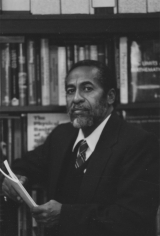
Dr. Ronald E. Mickens is the Distinguished Fuller E. Calloway Professor of Physics Emeritus at Clark Atlanta University. He is a physicist and mathematician who focuses on mathematical epidemiology, nonlinear dynamics, and mathematical modeling. He is also a historian of science, and has published two book on the history of Black physicists in the United States.
Justin Shapiro [00:00:01] Welcome to Initial Conditions.
Maura Shapiro [00:00:03] a physics history podcast.
Justin Shapiro [00:00:04] And today we are taking up where we left off last week with the second half of my interview with Ronald Mickens…
Maura Shapiro [00:00:10] …the distinguished African-American physicist. Ronald Mickens thinks that everyone should know about the contributions of Black physicists in the United States. So, he started the Mickens collection, which is now housed at NBL&A.
Allison Rein [00:00:24] The Niels Bohr Library and Archives.
Justin Shapiro [00:00:25] Which is where we are right now.
Maura Shapiro [00:00:27] I'm Maura Shapiro.
Justin Shapiro [00:00:27] And I'm Justin Shapiro.
Allison Rein [00:00:29] And I'm Allison Rein, your tour guide through the NBL&A.
Justin Shapiro [00:00:32] Every physics problem begins with a set of initial conditions that provide the context for physics to happen.
Maura Shapiro [00:00:38] Likewise, in Initial Conditions: The Podcast we provide the context in which physics discoveries happen. We'll dive into the history behind the science of people, places and events that have been overlooked and largely forgotten.
Justin Shapiro [00:00:53] And today we have part two of our interview with Dr. Ronald Mickens. I had the good fortune to travel to Atlanta, Georgia, to visit Dr. Mickens at his home, and he revealed some of his coping mechanisms for tuning out the noise of discrimination that was rampant in the field of physics when he was making his way in the late 1960s. So you received your Ph.D. from Vanderbilt University in 1968?
Dr. Ronald Mickens [00:01:17] Yes.
Justin Shapiro [00:01:18] And subsequently earned a postdoctoral fellowship at MIT. Did you encounter prejudice or discrimination from university administration, faculty, or fellow students? And if so, how did those encounters shape your early career?
Dr. Ronald Mickens [00:01:31] Okay. In the conventional sense that people talk about no, because the response to this question depends on one's personal perception of particular events in which they first feel threatened, either intellectually, emotionally, socially or physical. I grew up in an era in which we were told you had to survive, and being sensitive does not help you to survive. So long term survival with good mental and physical outcomes requires a keen sense of what to ignore and what to do battle with. So, living generally involves dealing with interactions, having lots of noise. So one needs to minimize the sensitivity to such events as much as possible. Such sensibilities are generally not useful or helpful. My generation and the prior generation of Black American physicists were successful in graduate school because they were realists. They were focused, they were mentally tough, emotionally calm and academically intellectually prepared. So in almost every case, we survived intact and made significant contributions to scientific research, mentoring and our communities. We did not leave graduate school damaged by our experiences as students, you know. But I would say, to summarize it, you know, we were prepared when we went, we were sure of our, you know, academic credentials. We had no remedial courses to take. We were psychologically ready. And, you know, if you read the histories or the reviews of, let's say, people like Wilkins, they very seldom talk about, you know, whether they were discriminated against. Well, what did you expect? This was the 1930s, the 1940s. And I—this is noise. And you dealt with it like noise. You know, you cannot pay attention to everything. But on the other hand, you also cannot ignore certain things. And I think we got a lot of respect for the fact that we could deal with the situation. You know, we came from communities that prepared us for this, and we were ready and we were successful.
Justin Shapiro [00:05:30] Thank you. Thank you for telling us a little bit about your background. Now I want to turn to the collection itself. I'd like to ask you a few questions about the history of the community of black physicists in the United States and the NSBP. And to start, let's go way back in time. There's a gap, a noticeable gap of 32 years between the first and second Ph.Ds in physics awarded to black men. Edward Bouchet received his Ph.D. in 1876. Elmer Imes received his in 1918. What do you think accounts for this gap?
Dr. Ronald Mickens [00:06:08] Well, almost all African Americans who were going into science basically did their science at historic—what we now call historically Black schools. And most of those institutions had very poor science departments. Bouchet was just lucky. I mean, he was at the right place at the right time. And he actually—he did his undergraduate work at Yale. But the way he got his Ph.D. was that he was…and when he finished Yale as an undergraduate student, he was offered a position at the Institute for Colored Youth in Philadelphia. But the agreement was that only if he stayed to get a Ph.D. and that's how he got his Ph.D. He finished in two years later, in 1876. Okay. That's another story by itself. But just think about it. There were very few African-American colleges and almost none of them at that time that you could consider to be universities offered programs in physics. I mean, at a high level. One of the few schools where this was where this occurred was Fisk. And so Imes got his undergraduate degree, not in physics, but in science at Fisk University. But Fisk had a curriculum where students who were in the scientific program took essentially mathematics every semester that they were there. You know, they took physics. They took chemistry. They took biology. They even took surveying. And you might say, why surveying? Well, Fisk was preparing students to go out and teach in rural areas primarily. And there they had to deal with black people there who—many of them were illiterate, couldn't read and write. And they were buying land, selling land, if the land wasn't taken from them. And they needed to have someone available who could actually measure through the measurements to ensure that they actually got the land. You know, so oftentimes the teacher was the only educated black person in that community. We're talking about rural communities. And so Fisk prepared its students. I mean, they even had them in, you know, that they had to read various texts in Greek and Latin. So they wanted their students to be prepared for everything. Generally, there was an astronomy course that these students take. You know, so there were very few schools that was able to prepare students to get degrees. Certainly even up north, many of the schools either had no emphasis on science or it was probably nebulous that some nonwhite person would be able to get into the class. And it was also the practice of most of the graduate schools to not give money to their graduate students, at least to black students. So if you look at the records of many of even some of our famous black scientists, there's this big gap between their undergraduate degree and when they got their Ph.D. That's because they had to work. Often they had families and they had to take care of families. And when they were in graduate school, typically what would happen is that they would be accepted in graduate school and they would be asked to, why don't you come here during the summer and take some courses so we can see what you could do? Okay. But they had to pay for it. They allowed them to come, but they didn't give them any money. So if you have a family, what are you going to do? You know, so that shows you the heroic role that black women played in these kinds of families. The other difficulty, and this is the case even up north, was generally they didn't want the black graduate students to be in front of white students. That is almost never were they TAs. And I'm sure that there were some exceptions. And that was because at places like Harvard, Princeton, Yale, a significant portion of their students were from the South. And not only that, but a significant portion of the funds that they were getting, gifts and so forth, were from the South. You know.. So it's—it's when you think about it, it's just amazing that any of these people were able to, you know, once you get accepted with no money, you have a family and you can't do the regular things like, you know, be a TA. Yeah.
Justin Shapiro [00:11:32] And if you don't have experience as a teacher, it becomes very difficult to teach, to learn how to teach because that's part of the role of the TA is you're sort of learning how to be in a classroom and educate the undergraduates in whatever field are specializing in. And with that in mind. I wanted to ask you a question about mentorship in the community of African-American physicists. And teaching is a big part of that. But after hearing your response to that last question and after looking through the collection that you gave to AIP, it struck me that quality mentorship was a significant factor supporting the growth of the community of black physicists. We see, for example, how Elmer Imes mentored James Lawson, the first person to earn a Bachelor of Science in Physics at Fisk University.
Dr. Ronald Mickens [00:12:18] And Carolyn Parker.
Justin Shapiro [00:12:20] Yes. And Carolyn Parker. And Lawson was also a mentor of yours? [Mickens] Yes. Yes. [Shapiro] And then Lawson succeeded Imes as chair of the Department of Physics at Fisk. After Imes passed away, Lawson then worked in HBCUs until he returned to Fisk as its first president to also be an alum in 1968. We also see that Donald Edwards, chair of the physics department at North Carolina A&T kept a framed picture of Ron McNair, his former student, and the second African-American to travel into space. How would you define mentorship and what role do you think it has played in the history of the community of African-American physicists?
Dr. Ronald Mickens [00:13:00] Well, at the schools, and I'm talking primarily about the sciences with emphasis on physics. At the schools that I'm familiar with, their professors—you see many of these professors that you mentioned were the first professors—except maybe for Fisk—in physics or chemistry with Ph.Ds at that school. They had a very intimate knowledge of what their students, their good students, would face when they went off. And that was also within the framework of the black community. This whole idea that you need to succeed, whatever you do, you need to succeed. So don't come back here telling me that people are hard on you, that they're calling you names and all that kind of stuff. Deal with it. And so their professors—and they were primarily male—treated their students, male and female, as if they were their own children. And they gave them the advice, the same advice that they would give their own children, and that was the community. So if you didn't have any money, they would lend you money. If during the summer you didn't have anywhere to stay, you stayed with them. I remember at Fisk one summer, there were four undergraduate students, three fellows and a girl. And and by the way, Nelson [Fuson, who became Chair of the Department of Physics at Fisk University in 1949], too, was European, you know, but that was it. I mean. The people who are at those schools were committed to their students. They were also committed to, let's say, research. But they knew, you know, that if these students were to succeed, then you had to give them that family type of setting.
Justin Shapiro [00:14:59] So. I think building on that last question on mentorship, could you describe your teaching philosophy?
Dr. Ronald Mickens [00:15:09] Yes. Well, my particular at…Clark Atlanta University, except for the last eight years, I only taught graduate courses, a course in quantum mechanics and a course, in math, physics and teaching graduate courses it's different. But first of all, my philosophy is centered on the fact that this is a social activity. That means that we have to interact in class and out of class. If I'm sitting down outside, you can come up and we can just sit down and talk some physics or we can talk some philosophy, you know? You know, I think therefore, I am? Well you might say: I think therefore I is. Well, okay, we can deal with that. But it's a social activity. That means you have to engage your students both in class and out of class, and they have to feel that they can engage you both in class and out of class, you know, you know, and that, you know, I tell my class, look, ask any question that you want. I'm not one of these people that says that no question is stupid, because I'm sure some of you are going to ask a stupid question, but we’re going to deal with it—we’re going to resolve it, you know, but we're going to resolve it from the point of view of: you can talk about it and I can talk about it. I said, I am not your teacher in the conventional sense where, I stand here, I say things and you write it down. I said, I can assure you nothing on the exam you will ever have seen before, I might not have seen it before, you know, because the idea of a course is not factual information. It is to hopefully at the end of the course, you will be able to take some of the fundamental principles that we discuss and apply them to situations that you have never seen before, and that maybe no one else has seen. So I tried to focus my classes on the fact that learning is a social activity and that we should engage in it. A lot of times I would give students exam problems that have never been solved, problems that, you know, you know, you could win $1,000,000 if you solve them. And so, you know that with the physical science class, well, I try to do is to give them ideas, concepts and things to think about.
Justin Shapiro [00:18:26] Okay. Shifting gears a little bit, to get back into the history of uh, our thing. I used to—I used to drive a stick shift. You can't really get them anymore more. I miss them here. Um, based on your 2020 interview with the Center for History Physics, I know you are no longer involved with the National Society of Black Physicists. However, you were involved with them for quite some time, and it seems to me that the NSBP originated at a moment of significant change in the community of black physicists. The previous generation—men like Donald Edwards, John Hunter, Halston Eagleson, and perhaps even James Lawson had educated a much larger cohort of young African-American physicists by the 1970s. At the same time, predominantly white institutions began accepting far more Black students than they had been just a decade prior, opening more opportunities up for these junior scholars. Could you describe how the NSBP was formed, its purpose and what it achieved?
Dr. Ronald Mickens [00:19:22] Yes. In 1972, right after I left M.I.T., Jim Young, who was the first African American professor there, we got together, decided we needed to honor our elders, our ancestors, people like the folks you just named—Jim Lawson, Donald Edwards and so forth. And so our committee, a small committee, was formed, and we had an event at Fisk. Howard Foster, who's at Alabama A&M had constructed over a period of about a decade—he had compiled a list of blacks with mainly PhDs in physics. I think it was called the Roster of Blacks in Physics. And roughly 50 to 60 of these people came back to Fisk. You know, many of them had not seen their professors and their friends for 30 or 40 years. And we called that. What did we call that? We called that the. We called that the Annual Awards Ceremony and Dinner. We didn't call it the first one. Two years later or four years later, we did a similar thing at Howard University. I mean, there was so much interest at both of those events, particularly the one at Fisk. We gave the honorees—we selected three people and we gave them a check, $250, which is some money in those days. So at Fisk we had a dinner and, you know, afterwards the awards banquet, I mean, the awards ceremony. At Howard, we decided to do a Day of Scientific Lectures. We had, I think, Walter Massey, Harry Morrison, and Warren [Henry], you know, the big names in the field, you know. Following the event at Fisk, and at Howard. And by the way, all of this is the known. So what I tell you may not be entirely accurate. A series of other conferences were held and most of them were here in Atlanta where we talked about issues like how do we, I mean, first of all, do we need to have more African-Americans in science in general, and in physics in particular? And so we had two, I think one in Morehouse, the other one was at Paschal's [restaurant]. But the Paschal one can be considered to have been at Morehouse since Carl Spight was in charge of that. So in 1977, this organization, which really wasn't an organization, it was just people who wanted to organize the event, met at Morgan State. I don't know if it’s called college or university then, but anyway, in Baltimore and it was agreed by most of the people there that a formal organization should be should be set up. The first name of the organization was called The Society of Black Physicists, and then it was changed later on to the National Society, you know, of Black Physicists. And officers were selected. The purpose of that organization was to deal with the issues that were on the minds of many people that were discussed in some of these earlier meetings. The early meetings were relatively small. I mean, you might have just ten or 15 people coming to oh, as I said, to repeat, you know, how do we increase the number of African Americans going into physics? You know, how can we—what is it that we can do beyond the regular mentoring that we can do to ensure their success in graduate school? And how can we increase the presence of physics in terms of not only its viability, but visibility in the society primarily, not only the Black society, but also the white society. And that that's sort of the general background to that. And the National Society of Black Physicists over the years, with its ups and down, has tried to do that.
Justin Shapiro [00:24:30] So my last two questions are about the about the exhibit itself that you presented in 1999. My first question is what methods did you use to collect the biographical material in the collection? And what did you use all that material for?
Dr. Ronald Mickens [00:24:47] Okay. Well, let me give you a little background. The centenary of the APS was being was going to be held here in Atlanta, and the National Society of Black Physicists didn't have any, as far as I could tell, any plans over and above what they normally do at these meetings. And so I approached the president and told him that I would construct an exhibit. And so I got myself a team of professional exhibit makers, you know, and I raised in a period of about six weeks, $250,000. I wrote essentially a one-page letter stating who I am, why I am writing them, why it's important, and why they should fund it. And many of the people just sent back checks for $5,000. “Oh, what you're doing is magnificent. We don’t really, you know, fund this kind of activity, but this will help.” But we got contributions from Dibner, from NASA, you know, some of them sent checks for $30,000 others for $50,000. You know, so if you get $50,000 checks, you know, doesn’t take long, so you got $250,000. And the team, the design team was really great. I don't know whether you've seen it or not, but it consisted of seven panels and each of the panels, well, I think they were roughly a meter by two meters, a little over two meters, and they were divided up into I think the first panel had a big photo of Bouchet. You know, but then we, you know, we divide it up into categories of people that we considered for the exhibit, you know, mentors, teachers, administrators, researchers and so forth. And so it was on exhibit at the downtown, at the centennial meeting. There was about $10,000 left over. but we had this money left over and that's how that little volume came out you know 70 or 80 pages—The African American Presence in Physics. So what I decided was that we already had information on these—take a one page, a photograph and a one page, and then put in some essays. And I asked Ken Manning, to write an essay, you know, at MIT. Davenport about the history, because he was one of the early administrative leaders and we produced that thing in less than a week. [Inaudible.] And we eventually got some additional money. We eventually made about 15,000 copies that were distributed over the years to various places. And what I had in mind was to show that African Americans had played a very prominent role in various areas of physics in the general sense, as I said, education, administration and so forth. And that as long as we were able to, you know, starting with Bouchet and Imes and so forth, we have made these contributions and not you know, we're not making the statement that people were trying to hide these things. It was just unknown. It was just unknown. You know, I—you know, as a sideline, which might be interesting, I remember one time getting invited out to a midwestern university. You know, it's one of these places where, you know, you fly out of the little twin engine plane, you know, and if you're lucky, one of the engines is running. So Small airport probably no bigger than this. So I get there and I see the person who was supposed to meet me. We had never met and apparently they had not seen a picture of me. So everybody—it was only like ten people on the plane and so everybody gets off. So I said I would just stand here, see what happens. And he looks. And in about 5 minutes he goes over to the counter and says, Has everybody gotten… Now I’m the only other person other than the person with the airline in the room—“has everybody gotten off the plane?” Yeah. The plane is empty. You know, we're about to, you know, load it back up again. So I said, let me just put this man out of his misery. I just went over and said: “You're looking for me.” I said, “You just don't know you're looking for me. You looked at me, but you didn't look at me. And, you know. But I am Ronald Mickens.” Oh, he just turned red. Don't worry about it. I get that all the time. Oh, that was funny. That was funny. And I've had that happen several other times. I didn't know that you were Black. Well, you know, it's interesting I was able to communicate with a young lady who was Elmer Imes… I guess we'd call them student assistant now, but she was basically a secretary and she typed up all of his manuscripts and she was in an airport coming to the inauguration of the first Black president. And she said—she was in she was out in Oklahoma. That's very famous Spectroscopist who knew Imes. And they were sitting there talking, you know, talking and, you know, and she was very fair-skinned and so she may not even known that she was Black. And, you know, and she asked him, you know, where was he going? And both of us are going to Fisk and, you know, they knew that Imes was at Fisk, you know, and somehow it—the conversation came up that he was Black or Negro in his day. And he said, I didn't know that.
Justin Shapiro [00:32:22] I just have two more questions.
Dr. Ronald Mickens [00:32:24] Okay, that's fine. Okay.
Justin Shapiro [00:32:26] They aren't really related to each other, but they're things I feel like I have to ask, just based on what I saw on the Mickens collection. And the first is I wanted to begin by asking you to reflect a bit on your relationship with Ronald McNair.
Dr. Ronald Mickens [00:32:39] Mm hmm.
Justin Shapiro [00:32:40] He had one of the most substantial biographical folders in your collection. And we plan on featuring some of the materials in there on our website. How did you two meet, and how did the NAACP and leading black physicists respond to his passing after the Challenger disaster?
Dr. Ronald Mickens [00:32:57] Well, I was a postdoc at M.I.T. and then later, I mean, I left for a year and went back as Visiting Professor. Earl Coleman, one of the white professors in physics, was very involved with the black students there, particularly the ones in physics, you know, Shirley Jackson and such. But Earl and some other people in the physics department wrote a proposal, I think it was, to the Department of Education, to set up a program where students from, I think it was seven historically Black schools would come to MIT for a year. And the schools involved were Fisk, Alabama A&M, North Carolina A&T, Norfolk, Hampton, Virginia State, oh and MIT. And so the idea was bring them up to MIT and say, look, these courses, we gonna give—pass/fail. That's what they do with—they were doing with the freshmen. But bring the students. Some say we're going to give you the M.I.T. experience. We're going to treat you like regular students at M.I.T. And then at the end of the year, if you think you want to come back, we'll give you consideration. And I was—I don't remember who the other recruiter was. I used to go around recruiting for them. It gave me an opportunity to do some traveling. I knew people at all of these schools. And so I met Ron at North Carolina A&T, and I believe he was a junior there. And that's how he got to M.I.T. You know, he spent that year there. And I think he was one of the better students there and they asked him to come back. Now, there were a number of other students. One of the aspects of the program was that if you couldn't make it in the Ph.D. program, they set up a master's program. You know, M.I.T. doesn't generally have a master's program. You know, you don't go to MIT for a master's in physics. You know, so there were a number of students who got master's degrees under that. And it worked out well. I mean, they went on to become very productive careers in the aerospace industry and things like that. But Ronald was one of the better students, and the thing I liked about Ron was that even though he was a kid, really, you know, I was in my late, I guess I was about 29-30. Yeah he was younger than I am. But I mean, but he seemed to be very focused. He seemed to know exactly what it is he wanted out of life. He was a hard worker and he was a karate expert, you know. The reason why my records contain more than anyone else is that that's what they sent me, you know? You know, what I requested was—I wanted, you know, two or three pictures, one that could be reproduced in a publication, a one-page summary of, you know, your career. I said, on that display, you know, you can't get much more than that. And any other thing that you want to send. You know, and some people basically just sent in one page and a photo. And so and there were others that later, you know, included ten photos and other materials and so forth. Yeah. Yeah. So I did not intentionally, you know, but I had known McNair for a long time. In fact, we spent one month, along with some other people who I won't mention traveling around Europe together in a car. But he was very focused and he knew I mean, in some sense, you know, though, I hate comparisons. It was like, you know, it was very clear if you read John Glenn's biography or autobiography, that he knew what he wanted to do. He knew that that that he was going to take this astronaut experience and extend it into something else, like being a politician or senator and so forth. And I think Ron McNair had these long-term plans, I'm not sure they include politics, but certainly he had some idea, you know, of his important role in the space program and the fact that he was well qualified to do it.
Justin Shapiro [00:38:00] That's Dr. Ronald Mickens, the distinguished Folger E. Callaway Professor Emeritus of Physics at Clark Atlanta University. We spoke together in his home in Atlanta, Georgia.
Maura Shapiro [00:38:10] Join us next week for a trip to the Allegheny Observatory in Pittsburgh, Pennsylvania, for a deep dove into the story of the unexpected hero of light, John Brashear.
Lou Coban [00:38:20] This is the statue of John Brashear, who was sort of the patron saint of the new Allegheny Observatory. John Brashear was really one of the foremost opticians of his time, and he was totally self-taught.
Maura Shapiro [00:38:35] To learn more about our discussion and find related photographs, blog posts and transcripts for this episode, check out our website at aip.org/initialconditions or click the link in the episode description.
Justin Shapiro [00:38:48] Also, a shout out today to our tour guide and the Associate Director of Library Collections and Services at the Niels Bohr Library & Archives, Allison Rein.
Maura Shapiro [00:38:55] This episode was created, researched and written by Maura Shapiro and Justin Shapiro.
Justin Shapiro [00:39:00] Alison Rein is our executive producer with audio production and editing by Kerry Thompson.
Maura Shapiro [00:39:05] Special thanks to the wonderful staff of NBAL&A. and CHP for supporting us in all our research needs.
Justin Shapiro [00:39:11] Initial Conditions is generously sponsored by the Alfred P. Sloan Foundation.
Maura Shapiro [00:39:15] I’m Maura Shapiro.
Justin Shapiro [00:39:17] I'm Justin Shapiro.
Maura Shapiro [00:39:18] And you've been listening to Initial Conditions.
Allison Rein [00:39:21] From the Niels Bohr Library & Archives at the American Institute of Physics.
Justin Shapiro: The thoughts and opinions that Dr. Mickens expressed are his thoughts and viewpoints and not representative of AIP.
Interview of Ronald E. Mickens by David Zierler on August 5-7, 10, 11 & 13, 2020, Niels Bohr Library & Archives, American Institute of Physics, College Park, MD USA, www.aip.org/history-programs/niels-bohr-library/oral-histories/47213.
In this Oral History Interview, Dr. Mickens describes his childhood, how he became interested in physics and mathematics, and his career with Clark Atlanta University and the National Society of Black Physicists.
Mickens, Ronald E., editor. Edward Bouchet: The First African-American Doctorate. Singapore: World Scientific Publishing Company, 2002.
This book describes the life and work of Edward Bouchet, the first African American to earn a doctorate in physics. It highlights the distinct obstacles that Black scientists faced in building their careers and a community with their colleagues.
Mickens, Ronald E., editor. The African American Presence in Physics. Atlanta: Ronald E. Mickens, 1999. Available here.
This book emerged from the APS centennial exhibit of the same name. Through personal accounts, speeches given at the opening of the exhibit, and biographical materials submitted to Mickens, this book describes in great detail the history and accomplishments of African American Physicists.
Special thanks to our guest, Dr. Ronald Mickens. Kerry Thompson of Thompson House Productions produced this show. Allison Rein is executive producer. Initial Conditions: A Physics History Podcast is generously sponsored by the Alfred P. Sloan Foundation.
Sources and Collections Used
Ronald E. Mickens collection on African-American physicists. American Institute of Physics, Niels Bohr Library & Archives, College Park, MD 20740, USA.



